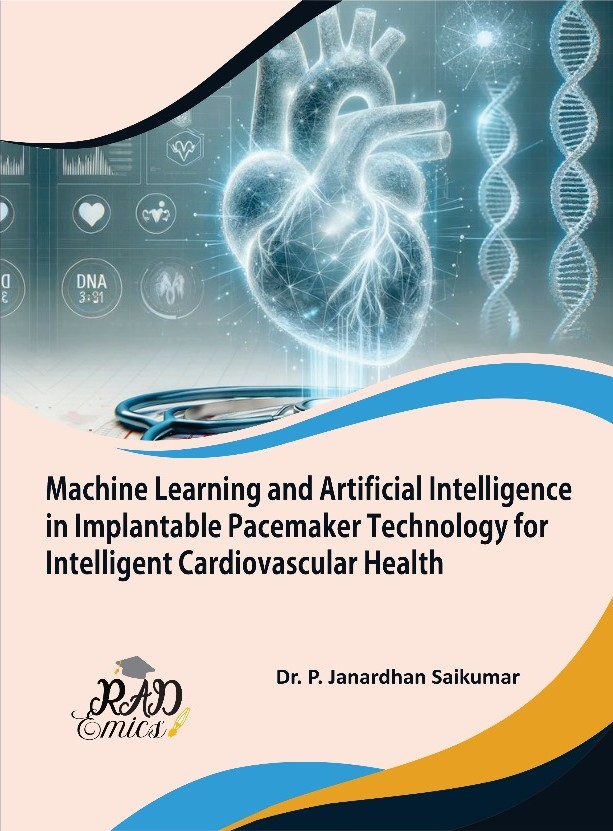
Abstract
Cardiac pacemakers are vital life-supporting devices for patients with arrhythmias and conduction disorders. Traditional systems rely on fixed algorithms and limited sensing capabilities, often requiring manual reprogramming to adapt to physiological changes. Recent advances in biosignal acquisition and deep neural networks have paved the way for intelligent pacemakers capable of closed-loop control and predictive pacing. By integrating multi-modal sensing with embedded AI, these systems can analyze real-time cardiac data, detect arrhythmic patterns, and adjust stimulation parameters dynamically to optimize therapy. This chapter explores the principles of modern biosignal acquisition, robust signal processing, and deep neural network models tailored for resource-constrained implantable devices. Challenges in hardware-software co-design, power efficiency, fail-safe mechanisms, and clinical trust are discussed in detail. Emphasis was placed on adaptive rate response, predictive arrhythmia prevention, and continual learning frameworks that personalize pacing over time. The convergence of embedded AI and advanced sensing promises to redefine pacemaker therapy by delivering safer, more responsive, and patient-specific interventions. This integration sets the stage for a new generation of cardiac implants that bridge biomedical engineering, real-time signal processing, and ethical AI deployment in critical healthcare applications.
Introduction
Cardiac pacemakers have been a cornerstone of arrhythmia management for decades [1], evolving from rudimentary fixed-rate devices to highly programmable systems capable of dual-chamber and rate-responsive pacing [2]. Despite this progress, conventional pacemakers often rely on threshold-based algorithms that remain static between clinical follow-ups [3]. While these devices reliably prevent bradycardia and certain conduction disorders [4], their limited adaptability can pose challenges for patients with complex or evolving cardiac conditions [5].
Modern advancements in biosignal acquisition technologies have created opportunities to capture richer physiological data from the human heart [6]. Sensors capable of recording intracardiac electrograms, surface-like ECG signals [7], hemodynamic indicators, and patient activity levels now provide a more detailed, real-time view of cardiac function [8]. These multi-modal data streams can reveal subtle patterns that conventional pacemaker control algorithms may not detect [9]. Reliable acquisition and preprocessing of such signals are essential to enable advanced, adaptive control strategies [10].
The emergence of deep neural networks offers powerful tools for extracting meaningful insights from complex biosignals [11]. DNNs excel at modeling non-linear relationships, detecting temporal patterns, and learning latent representations from raw physiological data. In the cardiac domain [12], they have demonstrated remarkable success in tasks such as arrhythmia detection and ECG classification [13]. Integrating DNN-based inference engines directly within pacemaker systems holds promise for real-time [14] interpretation and decision-making based on continuous biosignal monitoring [15].